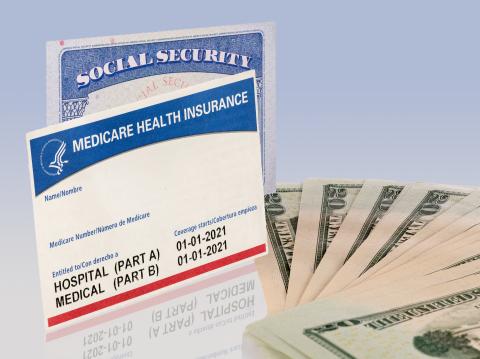As we age, we need to ensure we are ready for what is to come. Aging can take a toll on our bodies and our minds, so getting things in order at an earlier stage in life is imperative. Understanding how the Medicare program works is essential to planning for your future.
Medicare Basics
Medicare is a federal health insurance program for those over 65 years of age. It also applies to those younger who are on disability. Anyone that has End-Stage Renal Disease is also covered under Medicare.
Medicare Parts
Part A – Hospital insurance that covers inpatient hospital stays, hospice care, care in skilled nursing facilities, and some home health care.
Part B – Medical insurance that covers doctors’ services, medical supplies, outpatient care and preventive services.
Part C – Medicare advantage plan is an alternative to the original Medicare part A/B/D plans. Most plans have lower out of pocket costs than traditional Medicare. You must use doctors and facilities in the network for low costs. There are also extra benefits that traditional Medicare doesn’t provide, like hearing, dental, and vision. You may need to get a referral for specialists.
Part D – Prescription drug coverage that covers the cost of prescription drugs, including many vaccines for preventive care.
Medicare Premiums
Many of us that paid into Medicare or who had a spouse pay through taxes will not have to pay a Part A premium. Most people will pay the standard Part B premium, which was ~ $145 per month for 2020. If you had income that was higher (2 years previously) you will pay more according to your income range. The deductible for Part B is ~ $200 and then 20% of doctor services and outpatient therapy after you meet your deductible.
How to Select a Plan
When deciding between original Medicare and Medicare Advantage, there are many things to consider. With original Medicare, you can choose any provider or specialist that takes Medicare. You won’t need referrals or worry about a doctor leaving the network. Medicare Advantage is essentially private insurance with PPOs and HMOs, so the choices are more restrictive. Original Medicare does not pay for cosmetic surgery, vision, hearing, or dental. Medicare Advantage provides all of these and more, including wheelchair ramp installation, transportation to doctor’s appointments and even meal delivery.
Costs of Plan
The government regulates the premiums and deductible amounts for each year. However, there is no annual cap on out-of-pocket costs. Under Medicare Advantage, enrollees still pay the government-set Part B premium. But they do not pay the 20% coinsurance, instead paying set copay amounts for doctor visits. They also have an annual cap on out-of-pocket expenses. Medicare has the option for Medigap (private insurance) coverage to help with the 20% coinsurance, but Medicare Advantage does not allow for Medigap.
Deciding which plan is best for you really depends on your health at 65 years of age and what you anticipate needing in terms of care. You may get away with the original coverage if you have very little medical issues, but the Medicare Advantage will save you money over the long haul if you have any serious medical issues.




